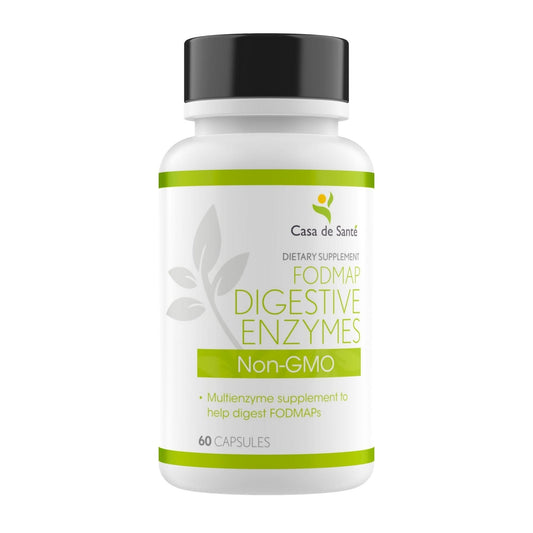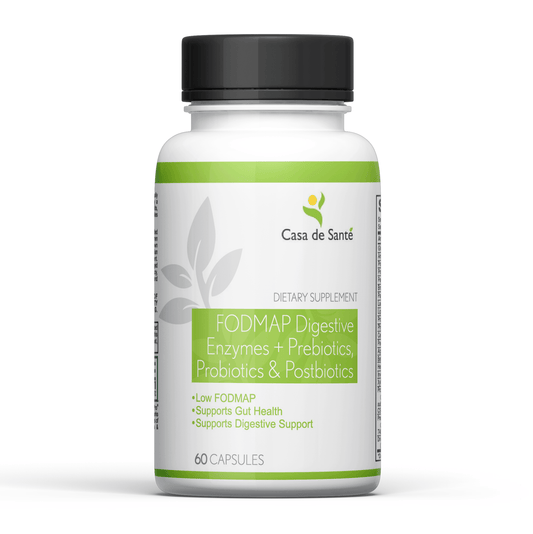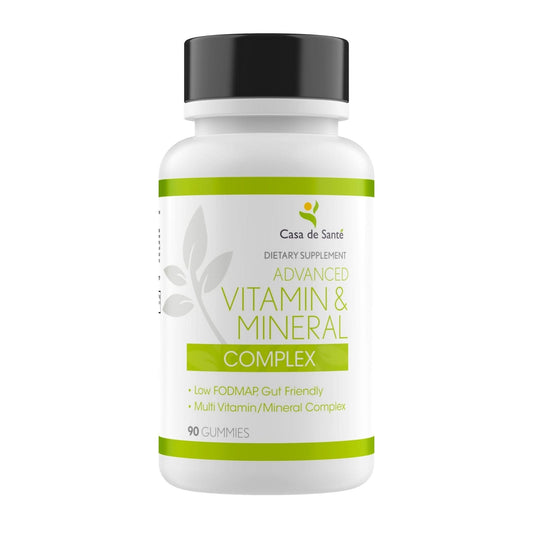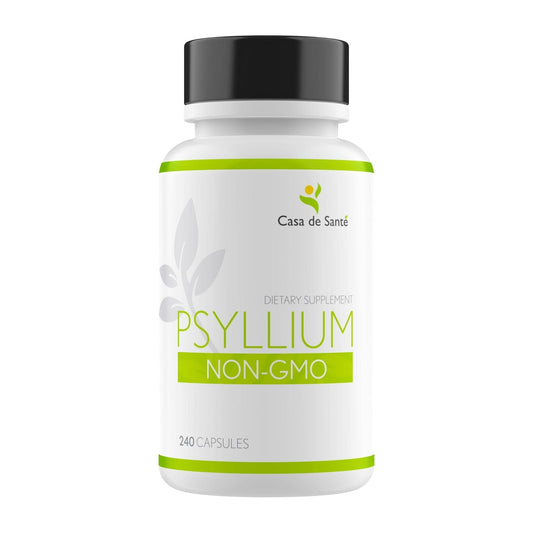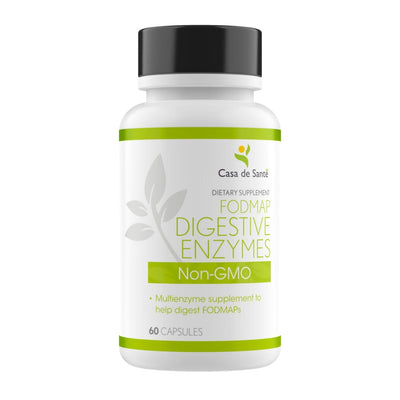What Is Borderline SIBO? Understanding the Gray Area of Small Intestinal Bacterial Overgrowth
What Is Borderline SIBO? Understanding the Gray Area of Small Intestinal Bacterial Overgrowth
Small Intestinal Bacterial Overgrowth (SIBO) has gained significant attention in the world of digestive health in recent years. While many are familiar with classic SIBO diagnoses, fewer understand the nuanced reality of borderline SIBO—a condition that exists in the diagnostic gray area and often leaves patients with lingering symptoms and questions. This comprehensive guide explores what borderline SIBO is, how it differs from full-blown SIBO, and what approaches might help those caught in this frustrating middle ground.
What Exactly Is Borderline SIBO?
Borderline SIBO represents a clinical scenario where test results fall just shy of the established diagnostic criteria for Small Intestinal Bacterial Overgrowth, yet patients experience many of the same uncomfortable symptoms. Traditional SIBO is diagnosed when breath tests show hydrogen or methane gas levels that exceed specific thresholds, indicating an abnormal bacterial population in the small intestine. However, borderline cases show elevated readings that don't quite reach these diagnostic cutoffs.
These cases create a challenging situation for both healthcare providers and patients. The symptoms are real and often debilitating, but the test results don't provide the clear-cut diagnosis needed for standard treatment protocols. Many patients find themselves in a frustrating limbo—experiencing significant digestive distress without a definitive diagnosis or treatment plan.
The Diagnostic Challenges
Diagnosing borderline SIBO presents unique challenges. The most common diagnostic tool, the lactulose or glucose breath test, measures hydrogen and methane gas produced by bacteria in the small intestine. Traditional diagnostic criteria typically require hydrogen levels to rise by at least 20 parts per million (ppm) above baseline, or methane levels to exceed 10 ppm. Borderline cases might show elevations of 10-19 ppm for hydrogen or 5-9 ppm for methane—significant increases that suggest bacterial imbalance but fall short of diagnostic thresholds.
Adding to the complexity, different labs and practitioners may use varying cutoff points, creating inconsistency in how borderline cases are identified and managed. Some forward-thinking practitioners recognize these gray-area cases as clinically significant, while others adhere strictly to established diagnostic criteria, potentially leaving patients without appropriate treatment.
Common Symptoms That Suggest Borderline SIBO
Individuals with borderline SIBO typically experience many of the same symptoms as those with confirmed SIBO, though sometimes with less severity. These commonly include bloating and abdominal distension, especially after meals; irregular bowel movements alternating between constipation and diarrhea; excessive gas and flatulence; abdominal discomfort or cramping; food sensitivities, particularly to fermentable carbohydrates; and even non-digestive symptoms like brain fog, fatigue, and mood disturbances.
The challenge lies in the fact that these symptoms overlap with numerous other digestive conditions, including IBS, food intolerances, and functional digestive disorders. Without clear diagnostic markers, identifying borderline SIBO requires careful symptom tracking and often a process of elimination.
The Science Behind Bacterial Imbalance
Understanding borderline SIBO requires examining the complex ecosystem of the digestive tract. The small intestine normally contains relatively few bacteria compared to the colon. This low bacterial environment is maintained by several protective mechanisms, including stomach acid, intestinal motility, the migrating motor complex (MMC), and the ileocecal valve that separates the small intestine from the bacteria-rich colon.
In borderline SIBO, one or more of these protective mechanisms may be compromised, allowing bacteria to proliferate beyond normal levels but not to the extent seen in full SIBO. This subtle bacterial imbalance can still significantly impact digestive function and nutrient absorption, creating real symptoms despite not meeting standard diagnostic criteria.
The Microbiome Connection
Recent research suggests that borderline SIBO may represent not just an overgrowth issue but a dysbiosis—an imbalance in the types of bacteria present rather than simply their numbers. The small intestine should contain primarily aerobic bacteria and lactobacilli, but in borderline cases, there may be an inappropriate increase in anaerobic bacteria or species normally confined to the colon.
This qualitative change in the microbiome can disrupt normal digestive processes even when bacterial counts don't reach levels traditionally associated with SIBO. These bacterial imbalances can affect motility, increase gas production, and trigger immune responses that contribute to symptoms.
Treatment Approaches for Borderline SIBO
Managing borderline SIBO often requires a multifaceted approach that addresses both the bacterial imbalance and the underlying factors that contribute to it. While treatment plans should always be personalized and developed with healthcare providers, several strategies have shown promise for those in this diagnostic gray area.
Dietary Modifications
Dietary changes often serve as the first-line approach for managing borderline SIBO symptoms. Low FODMAP diets, which restrict fermentable carbohydrates that feed intestinal bacteria, can provide significant symptom relief for many patients. This approach reduces the substrate available for bacterial fermentation, potentially decreasing gas production and associated symptoms.
Other dietary approaches include the Specific Carbohydrate Diet (SCD), elemental diets, or customized elimination diets that identify and remove trigger foods. These interventions aim to reduce bacterial fermentation while providing adequate nutrition. Incorporating digestive enzymes can also support these dietary modifications by enhancing the breakdown of difficult-to-digest foods. For instance, Casa de Sante offers low FODMAP certified digestive enzymes that contain a comprehensive blend of 18 targeted enzymes specifically designed for sensitive digestive systems, including those with FODMAP sensitivities often seen in borderline SIBO cases.
Herbal Antimicrobials and Prokinetics
For those with borderline SIBO, gentler interventions may be appropriate before considering pharmaceutical antibiotics. Herbal antimicrobials like berberine, oregano oil, garlic extract, and neem have demonstrated effectiveness against intestinal bacteria while typically causing fewer side effects than conventional antibiotics. These natural compounds may help reduce bacterial populations without the collateral damage to beneficial bacteria often seen with prescription medications.
Prokinetic agents that improve intestinal motility can also play a crucial role in preventing bacterial accumulation. Options range from pharmaceutical prokinetics to natural alternatives like ginger, 5-HTP, and motility-activating supplements. By supporting the migrating motor complex, these interventions help maintain the natural cleansing waves that prevent bacterial buildup in the small intestine.
Digestive Support and Enzyme Therapy
Optimizing digestive function can significantly reduce symptoms and prevent bacterial overgrowth. Adequate stomach acid is essential for preventing bacterial entry into the small intestine, while digestive enzymes ensure proper food breakdown, reducing the availability of undigested food particles that bacteria can ferment.
Professional-grade enzyme supplements can be particularly beneficial for those with borderline SIBO who often struggle with multiple food sensitivities. A comprehensive enzyme formula like the one offered by Casa de Sante provides targeted support for protein digestion (with dual protease complex, bromelain, papain, and peptidase), carbohydrate breakdown (with amylase and alpha-galactosidase for FODMAP support), and fat digestion (with lipase). These enzymes work synergistically to enhance nutrient absorption while reducing the digestive stress that can exacerbate SIBO symptoms.
Lifestyle Factors That Influence Bacterial Balance
Beyond diet and supplements, several lifestyle factors play crucial roles in managing borderline SIBO and preventing progression to full-blown bacterial overgrowth. Addressing these elements can create an environment less conducive to inappropriate bacterial growth in the small intestine.
Stress Management and Gut-Brain Connection
The intimate connection between the gut and brain means that psychological stress can directly impact digestive function. Chronic stress alters gut motility, decreases protective stomach acid production, and influences the composition of the gut microbiome—all factors that can contribute to bacterial imbalance. Implementing effective stress management techniques such as meditation, yoga, deep breathing exercises, or cognitive behavioral therapy can help maintain proper gut function and reduce SIBO-related symptoms.
Regular physical activity also supports healthy gut motility and has been shown to positively influence the gut microbiome. Even moderate exercise like walking can stimulate the migrating motor complex, helping to clear bacteria from the small intestine between meals.
When to Consider More Aggressive Treatment
While many borderline SIBO cases respond well to the conservative approaches outlined above, some situations warrant more intensive intervention. Persistent or worsening symptoms despite lifestyle and dietary changes may indicate progression from borderline to full SIBO, or the presence of other underlying conditions requiring specific treatment.
Regular monitoring through symptom tracking and follow-up testing can help determine if the current approach is effective or if adjustments are needed. Some practitioners recommend retesting after several months of treatment to assess whether bacterial levels have normalized or if more targeted interventions are necessary.
The Role of Comprehensive Digestive Support
For many individuals with borderline SIBO, comprehensive digestive support becomes a cornerstone of long-term management. This often includes continued dietary awareness, strategic supplementation, and lifestyle modifications tailored to individual needs. Professional-strength enzyme supplements can play a particularly important role in this maintenance phase, helping to optimize digestion and reduce the likelihood of symptom recurrence.
The enzyme complex from Casa de Sante offers this type of comprehensive support with its blend of 18 targeted enzymes that address multiple aspects of digestion. For those following specialized diets like Paleo or Keto, which are sometimes recommended for SIBO management, these enzymes can be especially beneficial in breaking down the higher protein and fat content typical of these dietary approaches.
Conclusion
Borderline SIBO represents a significant yet often overlooked aspect of digestive health—a gray area where patients experience real symptoms despite not meeting strict diagnostic criteria. By understanding the nuances of this condition and implementing appropriate dietary, supplement, and lifestyle interventions, many individuals can find relief from their symptoms and prevent progression to more severe bacterial overgrowth.
The journey to digestive wellness for those with borderline SIBO typically requires patience, persistence, and a willingness to explore multiple approaches. With the right support, including targeted enzyme therapy, dietary modifications, and lifestyle adjustments, it's possible to restore balance to the gut ecosystem and reclaim digestive comfort. Remember that each person's path will be unique, and working with knowledgeable healthcare providers who understand the complexities of borderline SIBO can make all the difference in finding an effective management strategy.



